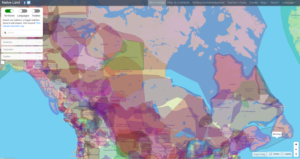Learn about the land you live on
You can learn more about the land you live on at Native-Land.ca, a website that fosters conversations about the history of colonialism, Indigenous ways of knowing, and settler-Indigenous relations.
The site is a space where non-Indigenous people can be invited and challenged to learn more about the lands they inhabit, the history of those lands, and how to actively be part of a better future going forward together.
Click here to visit native-land.ca

Understanding land acknowledgements
This video explores the deeper meanings and significance of land acknowledgements, particularly for settler-colonial organizations. It was produced by the Centre for Indigenous Student Services at York University in Toronto.
Learn about the land and the peoples where we will be gathering
The lands currently called Victoria and Vancouver Island have been home to Indigenous people for time immemorial. Before we assemble in Victoria for our meeting, we invite you to learn more about the people and the territories there.
The University of Victoria has published its own Land Acknowledgement and links to the home websites of many of the First Nations in the region. This content, along with the links, are copied below for your reference.
Three main groups on Vancouver Island:
- Coast Salish
- Nuu-chah-nulth
- Kwakwaka’wakw
The local Indigenous peoples to Victoria include the Lekwungen, WSÁNEĆ and local Nuu-chah-nulth Nations:
Lekwungen
Lekwungen means “place of the smoke herring.”
WSÁNEĆ
WSÁNEĆ means “raised up” (Dave Elliott Sr.) or “emerging place” (viewed from the water, rather than from the other land in the SENĆOŦEN language).
